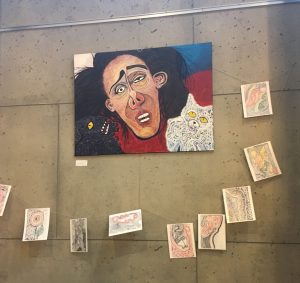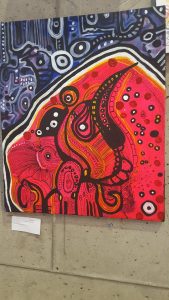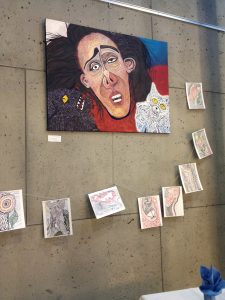Last Wednesday I attended Nicholas Carbonaro’s art opening in the Rose Dinning Hall. I wasn’t sure exactly how they were going to pull that off, but they had a jazzy band playing on the stage and some tasty chips and salsa that really put you in an art gallery kind of mood.
Before Carbonaro formally introduced his work, I had a chance to walk around and take a closer look at the variety of artwork that was hung on the wall, from photographs, paintings, clothing, and some smaller sketches. The majority of them featured a distorted human face decorated in various symbols and colors. I was intrigued, but mostly a little confused.
When Carbonaro walked up to the microphone to talk about his work, I finally saw the correlation between the idea he was trying to get across and the artwork itself. Carbonaro described how growing up social media and “selfies” weren’t a thing for him, and how today we use these tools to present a specific image to the world of ourselves. His pieces were instead trying to reflect the reality of how the world sees us or how we feel we are being seen, even if it isn’t so pretty. After his talk, I was able to appreciate his work more now that I understood the premise behind it. Overall, the artwork made me reflect, which is what I think he was hoping for.



